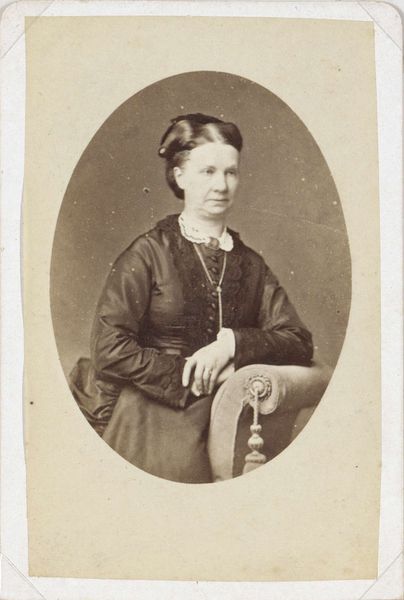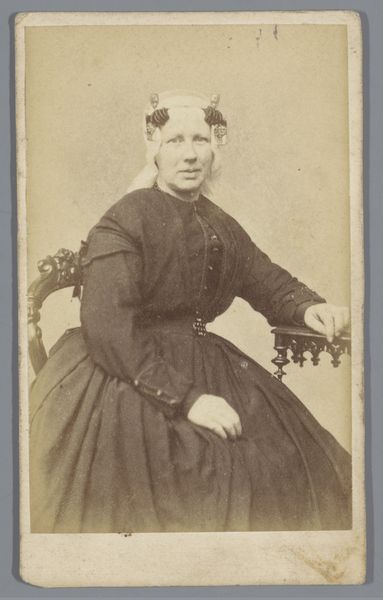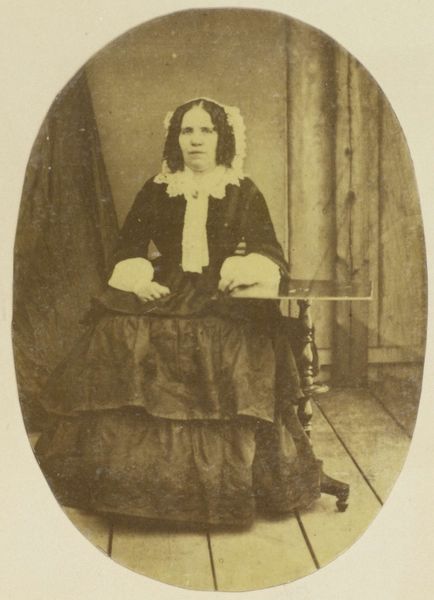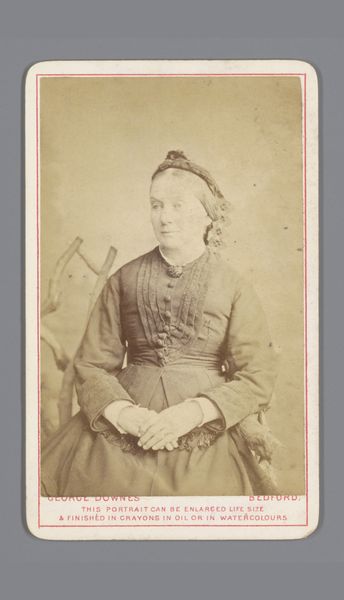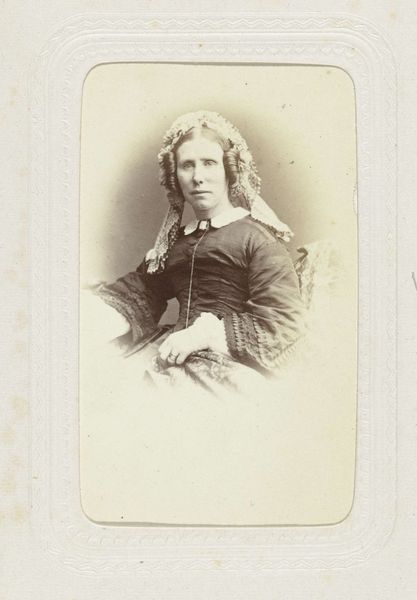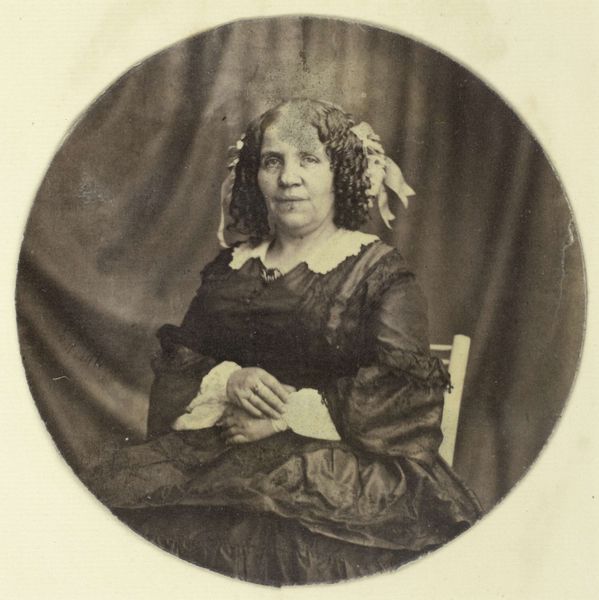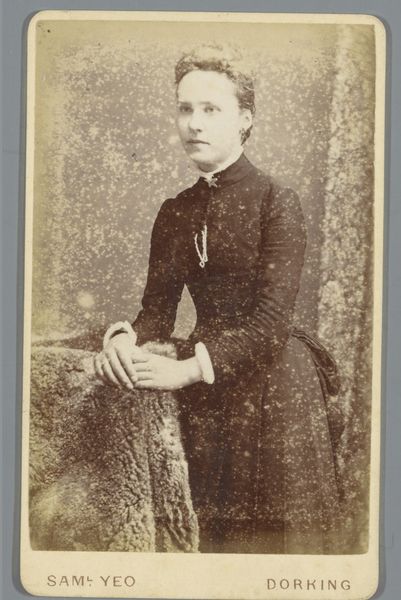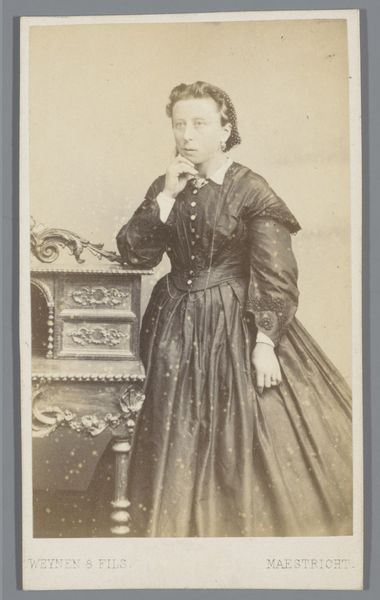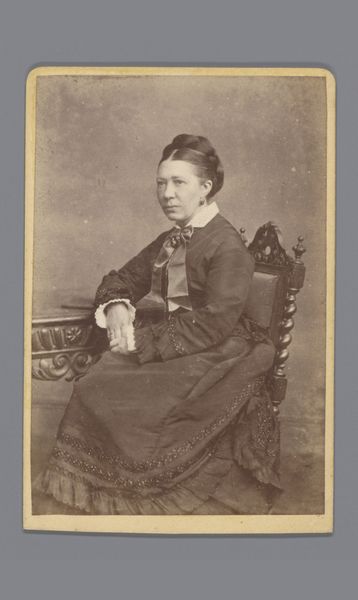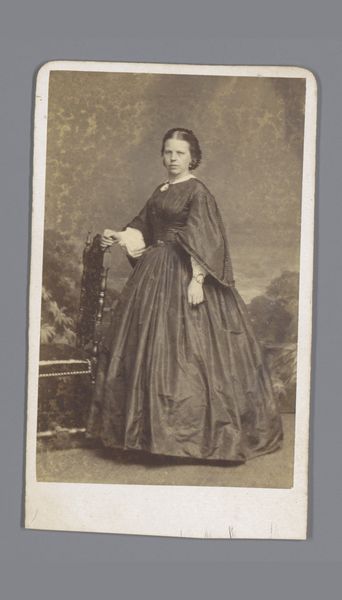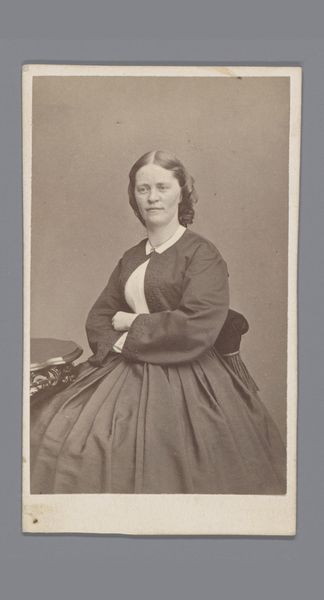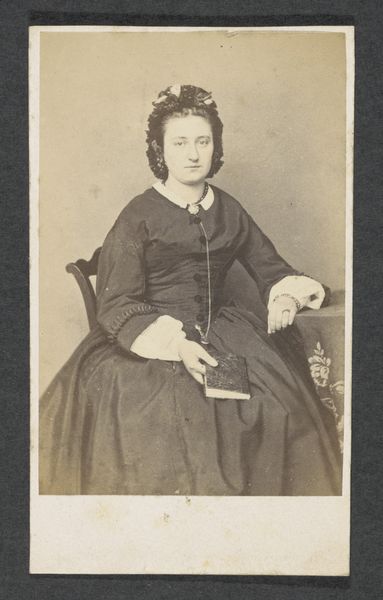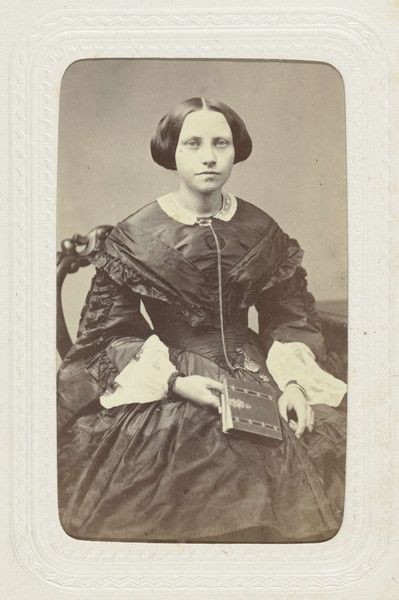
photography, gelatin-silver-print
#
portrait
#
photography
#
historical photography
#
gelatin-silver-print
#
19th century
#
genre-painting
Dimensions: height 100 mm, width 62 mm
Copyright: Rijks Museum: Open Domain
Curator: Let’s turn our attention to this photograph titled “Portret van een vrouw in een lange jurk”, which roughly translates to “Portrait of a Woman in a Long Dress,” believed to have been created sometime between 1864 and 1867. The studio mark at the bottom says, Hulk and Vlaanderen, Photographers. It’s a gelatin-silver print. Editor: My initial impression is of subdued elegance. There’s something quite powerful in her gaze despite the rather somber tone of the photograph. It feels incredibly staged and formal but she seems like she isn’t amused by any of this. Curator: Precisely, the formality is indicative of the era. The image comes from a period when photography was becoming more accessible to the middle class. The dark dress, voluminous as it is, may speak to mourning practices common at the time, or just point to an austere aesthetic embraced at the time. Do you note the table? I feel she is posing in a domestic set. Editor: The table feels somewhat precarious. Note also how it obscures part of her dress. Almost an attempt to integrate this woman into her social context, which looks fabricated as the rest of the shot, blurring the boundary between her personal life and her public presentation of self, dictated by the studio, which serves as an institution to uphold such conventions. Curator: Interesting. Consider how the backdrop and props work together to project an image of sophistication and domesticity that may or may not be rooted in the sitter's reality. This photograph isn't merely a record; it's a constructed narrative that has to be believed in by the public. It seems that it worked! She still seems quite composed for this situation. Editor: I see what you mean about "constructing" a narrative. I think what strikes me, despite all the visual messaging intended for the public's consumption, is the psychological effect this sort of thing could produce in that era of technological and social transition, which adds yet another layer of the photographic "narrative". We are seeing just one frame of one moment. It speaks to so much we don't know but we can interpret by its visual symbols. Curator: And by our analysis, the memory it contains survives! This is what these symbols are intended for, don't you think? To remind the culture about certain values that must be preserved over time, at least for those with the key to read its messages. A portrait reveals something both immediate and timeless about its sitter. Editor: And about us, who examine its messages long after their creator is gone. Well, this look at an interesting image gave me food for thought about art and photography conventions back in the day. Thanks.
Comments
No comments
Be the first to comment and join the conversation on the ultimate creative platform.
